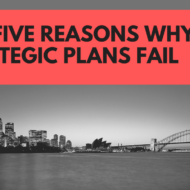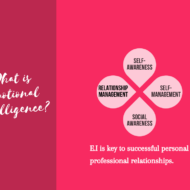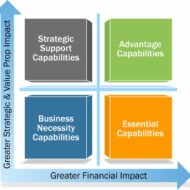Posted by Managementguru in Business Management, Decision Making, Human Resource, Motivation, Strategy
on Aug 20th, 2014 | 0 comments

Why Strategic Plans Fail What are Strategic Action Plans? Action plans refer to definite actions that are related to either short- or longer-term strategic goals. Action plans should include details of resource commitments, allocation and time horizons for accomplishment. Action plan development represents the key stage in planning that facilitates effective communication of plans throughout the organization followed by resource planning and deployment. Action plans are also referred to as projects, strategies, tactics, or initiatives. Plans in paper may look more creative and feasible in nature; in reality it is a big quest unanswered. Are executives showing the same kind of enthusiasm in giving shape to the plans they charted out in paper? Most plans fail or do not give the expected optimum results and the reasons attributed may be listed out as follows: 1. Authority is delegated but Responsibility is forgotten: Senior management executives are the STRATEGIC DECISION-BRAHMAS obviously but do they demonstrate what needs to be done? Demonstration is one of the powerful forms of communication and if the strategies are only to be communicated down the line and not to be followed by the senior officials how do you expect your team to perform efficiently? 2. Confusion between strategy and Ideas: An idea is a conceptual construct about a particular thing. It is more abstract in nature. But when it comes to strategy, you need to have a solid FUTURISTIC action plan that is bound to give you the desired results in the long term. The elements essential for a good action plan are: Availability of Resources (Men, Material and Money)Efficient Resource Allocation to the various Strategic Business UnitsProper DeploymentRegular Follow-up until accomplishment of goalsMinor Modification of plans in accordance with the macro environment (legal, economic, financial etc.,) 3. Dis-Orientation of Senior Leaders: If a senior leader reaches that higher position through internal promotion, he loses touch with day-to-day activities though he has a strong contextual understanding of the business. If a senior management leader happens to reach the top through external recruitment, it takes time for him to understand the business and the nature and needs of the organization. Only few leaders are capable of devising action plans that exactly nails the problem-situation (as we all know when an organization is looking for a turn around, the first blow is to the CEO of the organization). 4. Laissez Faire attitude doesn’t work out for strategic action plans: A senior leader has to monitor an action plan from the start till the end until the expected result is achieved. No strategy succeeds without a visionary in the background. The passion that a leader exudes is overwhelmingly infectious and motivates the team to complete a project. Here the leader is the initiator who is involved throughout strategic planning process so that momentum is sustained during the critical transition from planning to action. Follow ManagementGuru Net’s board Strategic Management – The Inevitable on Pinterest. 5. There might be one good goal but definitely no one good strategy: Understand strategies are subjected to change in accordance with the internal and external environment. Say, you have invested quite a good amount of money in shares of a particular reputed company and you come to know that there is a senior level management leadership change and feelers are that prices are likely to crash. What will you do? Just being able to conceive bold new strategies is not enough. The management must also be able to translate its strategic vision into concrete steps that is “getting things...

Posted by Managementguru in Human Resource, Organisational behaviour, Training & Development
on Jul 28th, 2014 | 0 comments

Anger Management What is Anger? To put in a layman’s perspective, When something doesn’t happen the way we want it to When somebody tries to dominate us When we are forced to do something When we get disappointed if things are not favorable and many more situations that kindle within us a feeling – which is called frustration if the intensity is mild and rage if the intensity is huge. This type of anger pertains to “self”; anger also erupts if our loved ones, near and dear ones experience threat or when you want to oppose a social stigma or when you feel helpless in a situation.” On top of all this “A Hungry Man is always Angry“, Do you agree with me? I want to ask a simple question, “Are the poor to blame for being poor?“. Well, this is a social problem and every one of us must be angry if the people of our own country are below the poverty line and not being able to eat atleast twice a day. How do we define Anger Management? Coming to Anger Management, it is training for temper control and is the skill of remaining calm. It has been described as deploying anger successfully. Anger management is the process of learning to recognize signs that you’re becoming angry, and taking action to calm down and deal with the situation in a positive way. We have to understand the crucial fact that ” In no way does anger management mean holding the anger in or trying to keep from feeling anger. Anger is a normal human emotion, a healthy one when it is expressed appropriately“. What Makes People Angry? I want to list down some of the most common things that make people angry. The most common factors that make people angry are: Grief – losing a loved one. Sexual frustration Rudeness Tiredness Hunger Pain Withdrawal from drugs or some medications Some physical conditions, such as pre-menstrual syndrome Physical illness Mental illness Alcohol, some drugs, alcohol abuse, drug abuse Injustice Being teased or bullied Humiliation Embarrassment Deadlines Traffic jams Disappointment Sloppy service Failure Infidelity Burglary Financial problems Being told you have a serious illness Courtesy – http://www.medicalnewstoday.com/ You know, I get angry even if I hear somebody munching or chewing something and I can never stand that sound! I googled to know more about my shortcoming and was relieved to find that I have good company on this issue. Read this news: ‘The sound of my boyfriend chewing makes me want to strangle him’: Model, 20, has a phobia of NOISE which makes her fly into a rage when she hears someone eating.” (This medical condition is called “Misophonia” which literally means hatred of sound and seems to be a neurological disorder). Faith Watson, 20, has misophonia – the hatred of sound Certain noises – including chewing – make her irrationally angry At meals she has to have the TV on so she can’t hear people chewing She had to drop out of college after being tormented by classroom noises Now she has been officially diagnosed, she is rebuilding her life and trying to make a career as a model Courtesy – http://www.dailymail.co.uk/health/ I personally feel that people have become restless in general and want everything to happen in a jiffy. Rationale and Logic have taken a back seat and we all are evolving as one group with SUPER-EGO and IMPATIENCE. What is the reason behind this? Are we becoming insensitive to others’ feelings? Have we forgotten to enjoy moments of happiness how small it may be? In my opinion there are only two types of anger: Constuctive Anger – that which helps to...

Posted by Managementguru in Business Management, Change management, Human Resource, Organisational behaviour
on Jul 25th, 2014 | 0 comments

EQ or EI When we talk about IQ or Intelligence Quotient, another entity which is indispensable to the smooth running of your business comes into the picture. Yes, I’m talking about Emotional Quotient or EQ, also called as Emotional Intelligence or EI. The concept of emotional intelligence is a blanket term that covers a broad collection of individual skills and dispositions, usually referred to as soft skills or inter and intra-personal skills. One must be adept at handling situations which warrant application of EI and at the same time strong in his/her basic IQ. Answer these simple questions and please don’t think way too extensively. Simple thinking will do… 1. How do you put a giraffe into a refrigerator? The correct answer is: Open the refrigerator put in the giraffe and close the door. This question tests whether you tend to do simple things in an overly complicated way. 2. How do you put an elephant into a refrigerator? The wrong answer is: Open the refrigerator put in the elephant and close the door. The correct answer is: Open the refrigerator, take out the giraffe, put in the elephant and close the door. This tests your ability to think through the repercussions of your actions. 3. The Lion King is hosting an animal conference; all the animals attend except one. Which animal does not attend? The correct answer is: The Elephant. The Elephant is in the refrigerator. This tests your memory. OK, even if you did not answer the first three questions, correctly, you still have one more opportunity to show your abilities. 4. There is a broad, deep river you must cross. But it is inhabited by hungry crocodiles. How do you manage it? The correct answer is: You swim across. All the Crocodiles are attending the Animal Meeting! This tests whether you learn quickly from your mistakes. This EXERCISE is cited just to show that logic or reasoning is an important element in management; at workplace or home. Parallel Thinking Just that you have to prune your memory to enhance your parallel thinking. In general parallel thinking is a further development of the well-known lateral thinking processes, focusing even more on probabilities—looking for what can be rather than for what is. Be Mindful of Others’ emotions: Emotional intelligence can be defined as the ability to monitor one’s own and other people’s emotions, to discriminate between different emotions and label them appropriately and to use emotional information to guide thinking and behavior. Emotional intelligence involves being MINDFUL of emotions and how they can affect and interact with traditional intelligence (e.g., impair or enhance judgment, etc.). One must also be able to develop and maintain healthy interpersonal relationships apart from being intelligent. It involves a lot of psychology which is in-built in our mechanism and heightened by our exposure to various work situations and challenges. An examination of more than 300 top-level executives from fifteen global companies showed that six emotional competencies distinguished stars from the average. Influence Team leadership Organizational Awareness Self-confidence Achievement Drive and Leadership Using Emotional Intelligence on the Job Emotional awareness is being in touch with the feelings of others. Well, if you say that “Emotions don’t go well with Logic”, and “Emotions can’t be mixed with Business”, I’d like to remind you “A controlled mind and cheerful spirit” are crucial when it comes to employee engagement and sustaining their morale. Even though your employees are well trained and technically experts in their own area, it takes that extra something for them to work whole-heartedly for their principals. They have to identify themselves with the organization and its objectives, in particular with the key persons...

Posted by Managementguru in Business Management, Financial Management, Marketing, Strategy
on Jul 15th, 2014 | 0 comments

What is Financial Capability? The availability, usage and management of funds have a bearing on the financial capability of an organization and ability to implement its strategies. A financial manager has to pool, deploy and allocate financial resources taking into consideration the capital or long term investments, working capital or short-term liabilities and repayment capacities. Factors that influence financial capability of an organization: 1. Factors related to source of funds: Capital structure, procurement of capital, controllership, financing pattern, working capital availability, borrowing, capital and credit availability, reserves and surplus, and relationship with lenders, banks and financial institutions. 2. Factors related to usage of funds: Capital investment, fixed asset acquisition, current assets, loans and advances, dividend distribution and relationship with shareholders. 3. Factors related to #management of funds: Financial accounting and budgeting systems, management control system, state of financial health, cash, inflation, return and risk management, cost reduction and control, and tax planning and advantages. Typical Strengths that Support Financial Capability: • Access to financial resources • Amicable relationship with financial institutions • High level of credit worthiness • Efficient capital budgeting system • Low cost of capital as compared to competitors • High level of shareholder’s confidence • Effective management control system • Tax benefits due to various government policies The examples given below show how strengths and weakness affect the financial capability of organizations: • A company faced many problems due to instability in the top management, an unfavorable public image, unfavorable government relations etc., but it had inherent strengths like a huge amount- to the tune of Rs.1000 crores invested in fixed assets which the company used for funding its diversification plans. Here we see one particular strength over-shadowing all other weaknesses which can be rectified in due course of time. • A scooter company had collected nearly Rs.1150 crores as advance for booking of scooters, but within five years, its cash position deteriorated owing to sudden and unforeseen cancellation of bookings and withdrawal of deposits, resulting in a huge interest burden. Had the company had a strong financial backup, it would have survived the trouble. Matching strengths and weaknesses with opportunities and threats requires that a firm should direct its strengths towards exploiting opportunities and blocking threats while minimizing exposure of its weaknesses at the same...

Posted by Managementguru in Business Management, Decision Making, Marketing, Strategy
on Jul 12th, 2014 | 0 comments

Stability Strategy in Management The Concept: A stable strategy arises out of a basic perception by the management that the firm should concentrate on using its present resources for developing its competitive strength in particular market areas. In simple words, stability strategy refers to the company’s policy of continuing the same business and with the same objectives. When a product is well accepted and has a brand value in the market, the company would want to expand its market base in that particular product segment to win over its competitors. For example, ‘Old Cinthol’ from Godrej, continues to be the trusted choice of most customers and one of the top most brands in soaps. Especially in rural areas, people prefer Cinthol which comes in different sizes in lieu of customer preference. Panneer Soda manufactured by Kalimark, a soft drink available only in southern parts of Tamilnadu is again a long-standing brand preferred by customers belonging to middle class and lower middle class. This indigenous brand is a direct competitor for coke and pepsi, the soft drink giants in the industry. The same applies to “BOVONTO” again a kalimark product whose growth terrorised giants in the likes of COKE and PEPSI. It is said that some of the multi-national companies tried to crush this small but indigenous and successful company by buying all the glass bottles used for bottling the drink from small retailers. All done by paying high price for old bottles and breaking them so that those bottles were not available for the kalimark manufacturers. Putting up a brave fight, Kalimark has introduced pet bottles (plastic containers) and for managing the dearth of containers they have erected a bottling plant also. Recently Kalimark group has reinvented itself with modern technology for production. The shape of Bovonto pet bottle was redesigned and production was increased. Related Posts: TURNAROUND STRATEGY STRATEGY EVALUATION TACTICS OR STRATEGY The Need for Stability Strategy: It continues to serve the customers in the same product or service, market and functional sectors. Its main strategic decisions focus on incremental improvement of functional performance.’ The focus is on maintaining and developing competitive advantages consistent with the present resources and market requirements. Say, if your business is doing well and you are able to factorize the economies of scale with a fairly decent profit, you would not want to go for expansion in the immediate future; instead you would go for, Sustenance Competitor management and Market share Maintenance Man has an inbuilt fear of change and only very few take that extra step to rage forward by being risk-aversive. Stability strategy suits medium-sized growing firms which have to first get well established in the market and wait for the right time to invest and divest. Companies do not go beyond what they are presently doing; they serve the same market with the present products using the existing technology. The essence of stability strategy is, therefore, not doing anything but sustaining a moderate growth in line with the existing trends. Advantages of Stability Strategy: The firm is successfully run and the objectives are achieved and there is satisfactory performance. Therefore, the management may want to continue with the same activities. A stability strategy is less risky. Unless the conditions are really bad, a firm need not take any additional risks. The management doesn’t foresee any change in the environment or opportunity in the market or any threat. When pursuing this strategy, there is no disruption in routine work. The down side of this strategy may be “setting of boredom” where you tend to do routine stuff, but the brighter side is the continuous positive response...










